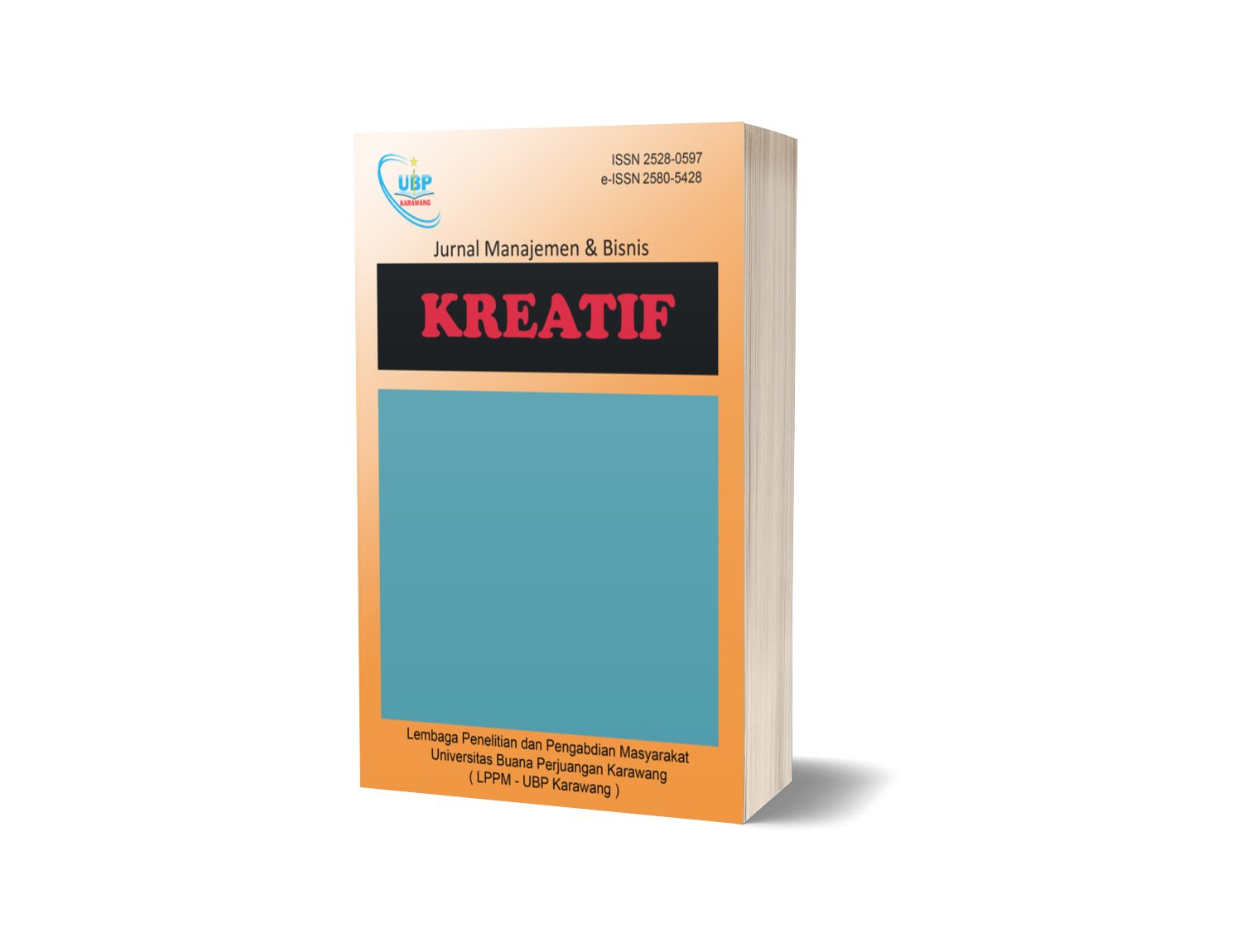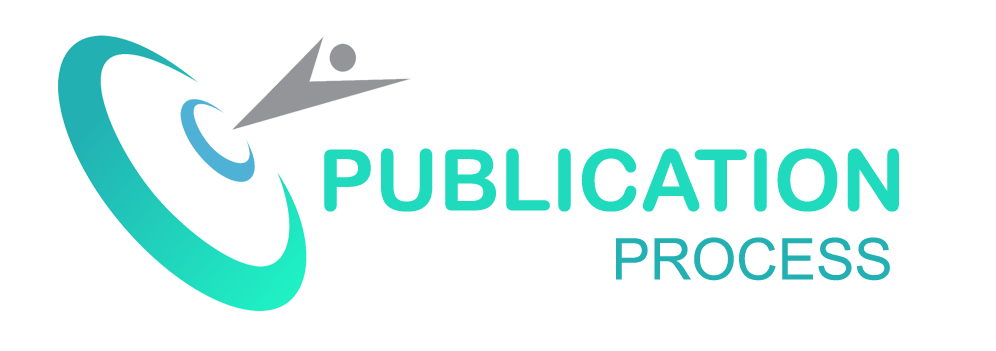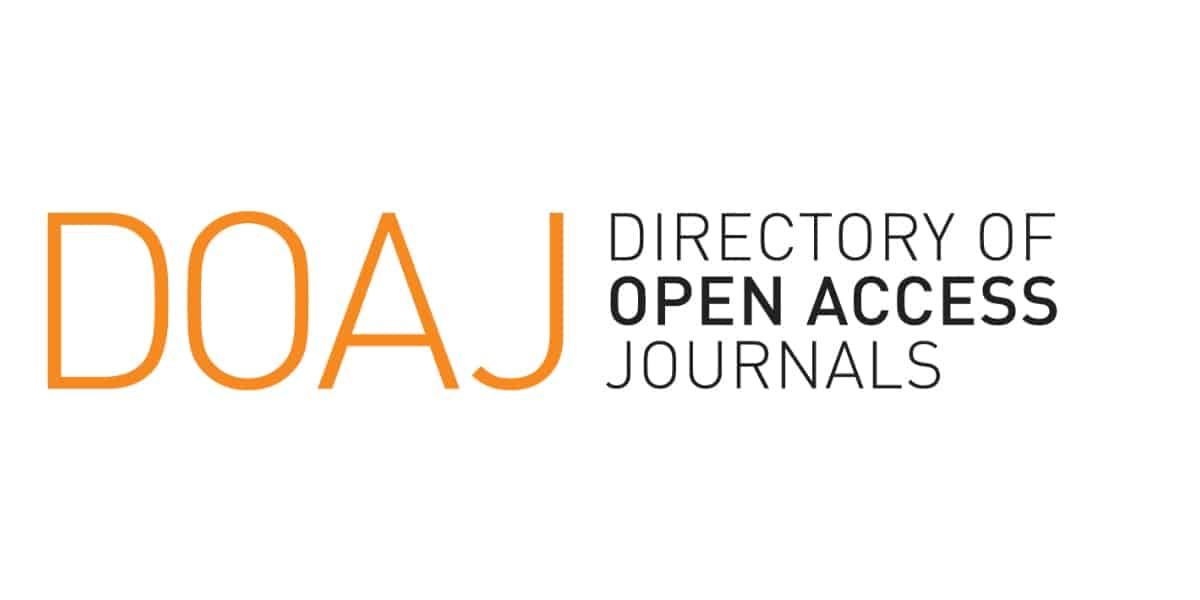DETERMINAN MOTIVASI KERJA SERTA IMPLIKASINYA TERHADAP KINERJA KARYAWAN PADA PT. INNOVATIVE PLASTIC PACKAGING KARAWANG PLANT
DOI:
https://doi.org/10.36805/manajemen.v3i1.246Abstract
ABSTRACT The problem raised in this research is to know, analyze and review the training, compensation, motivation and performance of employees at PT.Innovative Plastic Packaging Karawang plant. Analyze and prove the effect of training and compensation on motivation partially and simultaneously, analyze and prove the influence of motivation on employee performance. As well as analyzing and proving the effect of training, compensation partially and simultaneously on employee performance through motivation. This study uses path analysis, with the number of samples taken as much as 80 respondents with saturated sampling technique. The research method used in this research by using descriptive method and verifikatif. From the results of analysis of research data obtained some conclusions as follows: (1) Employee performance (Z) is in the range of good scale. Where the indicator of conformity of tasks with work procedures obtained the highest score, while satisfaction on the work obtained the lowest score. (2) Motivation (Y) is in the range of a good scale. Where the peer assistance indicators get the highest score, while the achievement award gets the lowest score. (3) Training (X1) is on a good scale range. Where the cost advantage training indicator scores get the highest score, while the training material indicator scores the lowest. (4) Compensation (X2) is in the range of a good scale. Where employment status indicators get the highest score, while the profit bonus indicator companies get the lowest. (5) Training (X1) have a significant effect on motivation (Y), with t test criterion 2.617> t table 1.991. Compensation (X2) have a significant effect on the motivation with the criterion t test 7.349 > t table 1.991. Training (X1), compensation (X2) simultaneously affect the motivation (Y) with the test criteria F arithmetic 95.20> F table 2.72. (6) Motivation (Y) has a significant effect on employee performance with the test ktiteria t-test 13.349> t-table 1.991. (7) Training (X1) has no significant effect on employee performance (Z) with the criterion of t test count 1,872 2.72. Keywords: Employee Performance, Motivation, Training, CompensationDownloads
References
DAFTAR PUSTAKA
Arep, Ishak dan Tanjung, Hendri . 2003. Manajemen Sumber Daya Manusia.
Jakarta: Universitas Trisakti.
Darodjat, Tubagus Achmad. 2015. Konsep- konsep Dasar Manajemen Personalia Masa Kini. Cetakan Kesatu. Penerbit PT.Refika Aditama,
Bandung
Fahmi, Irham. 2016. Manajemen Sumber Daya Manusia, Teori dan Aplikasi. Cetakan Kesatu. Penerbit Alfabeta, Bandung.
Gomes, Faustino Cardoso. 2003. Manajemen Sumber Daya Manusia. Penerbit CV.Andi Offset,Yogyakarta.
Hamali, Arif Yusuf. 2016. Pemahaman Manajemen Sumber Daya Manusia Strategi Mengelola Karyawan. Cetakan Pertama. Penerbit CAPS (Center for Academic Publishing Service), Jakarta
Handoko, Hani. 2013. Manajemen Personalia & Sumber Daya Manusia. Edisi Kedua, Cetakan Kedua puluh. Penerbit BPFE-Yogyakarta.
Hasibuan, Malayu S.P. 2016. Manajemen, Dasar, Penegertian , Dan Masalah. Edisi Revisi. Cetakan ketujuh. Penerbit PT.Bumi Aksara, Jakarta.
Hasibuan, Malayu S.P. 2016. Organisasi & Motivasi, Dasar Peningkatan Produktivitas. Cetakan Kesembilan. Penerbit PT.Bumi Aksara, Jakarta
Kadarisman. 2014. Manajemen Kompensasi. Cetakan Ke-2. Penerbit PT.Raja Grafindo Persada, Jakarta.
Kaswan. 2013. Pelatihan dan Pengembangan Untuk Meningkatkan Kinerja SDM.
Cetakan Kedua.Penerbit Alfabeta, Bandung.
Mangkunegara, A.A.Anwar Prabu. 2013. Manajemen Sumber Daya Manusia Perusahaan, Cetakan ke-11. Penerbit PT.Remaja Rosda Karya, Bandung
Mangkunegara, A.A.Anwar Prabu. 2015. Manajemen Sumber Daya Manusia Perusahaan, Cetakan kedua belas. Penerbit PT.Remaja Rosda Karya Offset, Bandung.
Moekijat. 2010. Manajemen Sumber Daya Manusia. Cetakan Kesembilan.
Penerbit CV.Mandar Maju, Bandung.
Mondy, R. Wayne; Noe, Robert M. 2005.
Human Resources Management. International Edition. South
Western Publishing:Ohio.
Nawawi, Hadari. 2005. Manajemen Sumber Daya Manusia Untuk Bisnis
Yang Kompetitif. Cetakan Keenam. Penerbit Gadjah Mada University Press, Yogyakarta.
Rivai, Veithzal. 2004, Manajemen Sumber Daya Manusia Untuk Perusahaan Dari Teori ke Praktik. Penerbit Rajagrafindo Persada, Jakarta
Sadili Samsudin, 2006. Manjemen Sumber Daya Manusia.Penerbit : CV Pustaka Seti
Santoso. 2017. Pengaruh Pelatihan dan Motivasi terhadap Kinerja karyawan Koperasi Agro Niaga Jaya Abadi Unggul Jabung Malang. Jurnal Warta Ekonomi, Vol.7, No.17 Februari 2017..
Simamora, Henry. 2015. Manajemen Sumber Daya Manusia. Edisi III. Cetakan kelima. Bagian Penerbitan Sekolah Tinggi Ilmu Ekonomi YKPN.
Sugiyono. 2012. Metode Penelitian Kuantitatif kualitatif dan R&D.
Cetakan Ke-17. Penerbit Alfabeta, Bandung.
Suharyadi dan Purwanto S.K. (2009). Statistika Untuk Ekonomi dan Keuangan Modern. Jakarta: Salemba Empat
Sutrisno, Edy. 2016. Manajemen Sumber Daya Manusia. Cetakan ke-8.
Penerbit Prenadamedia Group, Jakarta.
Sri Wiludjeng S.P, 2007. Pengantar Manajemen, Graha Ilmu:
Yogyakarta.
Suwatno dan Donni Juni Priansa 2014, Manajemen SDM dalam Organisasi
Publik dan Bisnis, Penerbit Bandung:Bandung.
Terry, George R., Rue, Leslie W. 2016. Dasar- Dasar Manajemen. Cetakan
Kedelapan. Penerbit Sinar Grafika Offset. Jakarta.
Uno, B. Hamzah.2012.Teori Motivasi &
Pengukurannya. Jakarta ; Bumi
Aksara.
Peraturan, Kebijakan, dan Buku pedoman
Undang-Undang Republik Indonesia Nomor 13 Tahun 20003, tentang Ketenagakerjaan.
Peraturan Menteri Tenaga Kerja dan Transmigrasi Republik Indonesia Nomor 8 Tahun 2014, Tentang
Pedoman Penyelenggaraan Pelatihan Berbasis Kompetensi.
Buku Pedoman Penulisan Tugas Akhir Mahasiswa Program Pasca Sarjana UNSIKA
Downloads
Published
Issue
Section
License
Authors who publish in Jurnal Manajemen dan Bisnis Kreatif agree to the following terms:
- Authors retain copyright and grant the journal right of first publication with the work simultaneously licensed under a Attribution-ShareAlike 4.0 International (CC BY-SA 4.0) License that allows others to share the work with an acknowledgment of the work's authorship and initial publication in this journal.
- Authors are able to enter into separate, additional contractual arrangements for the non-exclusive distribution of the journal's published version of the work (e.g., post it to an institutional repository or publish it in a book), with an acknowledgment of its initial publication in this journal.
- Authors are permitted and encouraged to post their work online (e.g., in institutional repositories or on their website) prior to and during the submission process, as it can lead to productive exchanges, as well as earlier and greater citation of published work (See The Effect of Open Access).








